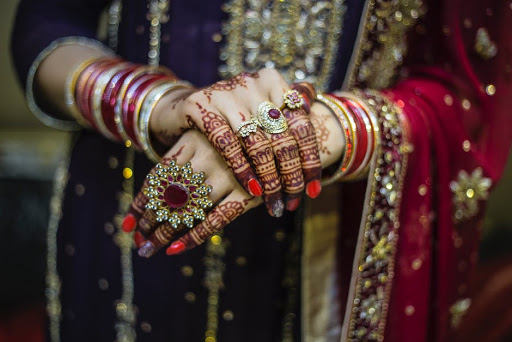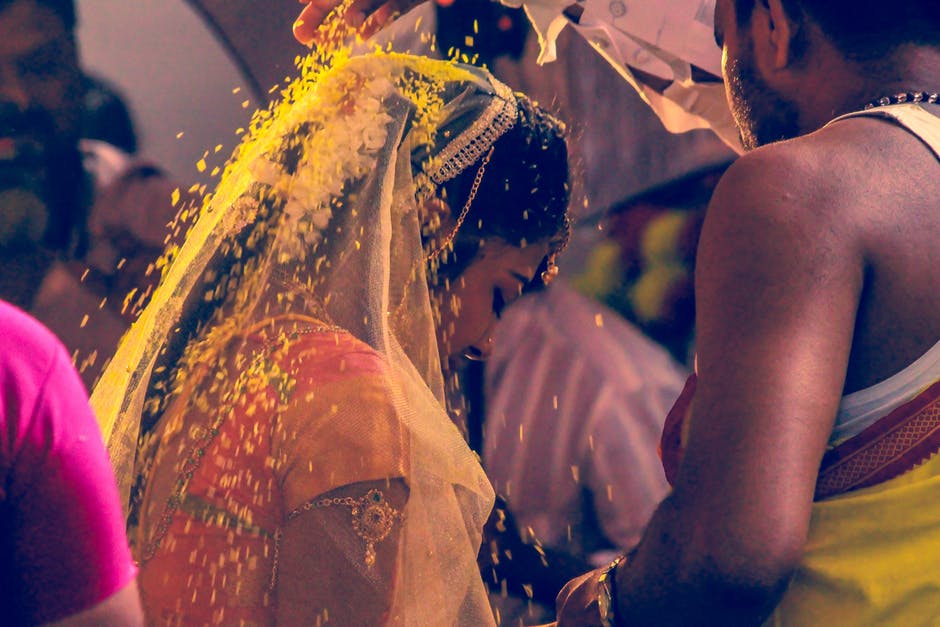Like Western weddings, there is a wide spectrum of traditions you can expect to find at an Indian wedding. Most traditional Indian Hindu weddings are a multi-day affair, and you might be surprised to find that there are ceremonies for several days. If you’ve been invited to a traditional Indian wedding, you’re in for a treat.
It’s normal to be curious about the practices and traditions that go into these ceremonies, especially since they’re so different from our own wedding traditions. This beginner’s guide will explain the history behind the most common wedding traditions as well as what to expect when you attend your first celebration.
Deciding the Date
While many brides choose wedding dates based on the time of the year, Indian Hindu weddings are determined by the stars. This fixed time for the wedding event is known as the muhurta, and it’s decided by calculating the position of the stars, moons, and planets.
There’s a ceremony in which both the bride and groom as well as their last three generations (or more!) are announced. It’s important for the wedding date to be agreed upon in this traditional manner to ensure the union is in the stars.
Before the Ceremony
As you’ll come to learn, Hindu weddings aren’t a single day event. Before the actual wedding, there’s a pre-party known as the sangeet. This is where all the women of the family come together to celebrate the upcoming union. This includes singing, dancing, and a lot of fun. The word sangeet literally translates to “sung together.” This entire event starts the wedding ceremony period.
The sangeet is a time to relax before the big day. With so much hectic excitement leading up to the actual wedding ceremony, it’s nice for the women to get together and enjoy each other’s company and celebrate. Traditionally, this event would last several days. Today, however, it’s limited to a single day or a single night. You can think of this celebration as the hen party or bachelorette party of sorts, though it’s more focused on singing and dancing.
The Wedding Ceremony
When the actual wedding ceremony comes around, there are a lot of traditions that are to be followed. First, the marriage ceremony will be held in a temporary structure known as a mandap. This is built specifically for the wedding, and it’s usually on an elevated platform and decorated with flowers.
Within the mandap, there is also a kindled fire. Because Hindu marriages are a sacrament, not a legal contract, the fire is seen as a witness to the union. Offerings are given to the kindled fire, and each offering is its own rite. Another striking feature of the union ceremony is the exchanging of floral garlands. This will usually be followed by the ring ceremony in modern traditions.
Finally, while there are many traditional wedding clothes for men, bride’s will be expected to wear red. This is also true for many Muslim weddings as well. In Indian culture, red is seen as symbolizing the rising sun and fertility. Finally, because marriage is considered a challenging stage for couples, cords are tied around the bride and grooms wrists to symbolize protection.
Attending an Indian Wedding Ceremony
If you’re a guest at an Indian wedding ceremony, as you can see above, you’re in for an exciting event. Most ceremonies are luxurious, gorgeous affairs that are something to behold. However, it can still be intimidating for outsiders to attend these unfamiliar ceremonies. The best thing you can do is be open-minded and conservative.
While most Indian weddings don’t have dress codes, it’s safe to say you should dress respectfully. For women, this means wearing a traditional sari or a long, modest dress. Men should wear suits or a traditional sherwani. Choose bright colors for your attire, if possible, though avoid red which is reserved for the bride. Also, avoid black and white since these are seen as colors that bring bad luck.
Next, you’ll need to be prepared for a long ceremony. These celebrations are elaborate, and they can continue long into the night. Many weddings, since they’re chosen by the stars, are planned either at unusual hours of the day or late at night. Make sure you’re prepared in case you’ll be expected to attend multi-day celebrations!
If you’ve been invited to an Indian wedding, it’s normal to feel a little anxious. However, you’re sure to have an amazing time. These weddings are vibrant and full of excitement backed by complex traditions. You won’t want to miss out on this fun.



